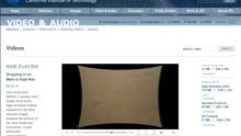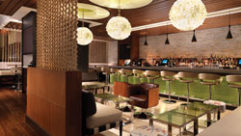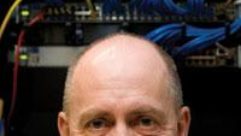Targeting the corporate client
May 20, 1997 12:00 PM,
Jack McLean
Corporate presentations rely on sound, lighting and video to motivate and inspire.Corporate meetings and presentations have a basic need: to communicate effectively. However, the best also entertain, motivate and inspire attendees. To meet this requirement, today’s corporate meetings must integrate sound, light and video at ever-increasing levels of sophistication.
Clients and producers in this market expect a high degree of technical expertise, a charge met by audio-visual companies that supply not only advanced equipment but commensurate expertise as well. The result has been meetings that communicate, but in a way that makes presentations fun and entertaining as well as motivating.
A recent meeting held by Target, a leading discount chain, backs this point. Attended by the company’s district team leaders at the Loews Ventana Canyon Resort in Tucson, AZ, the meeting presented a corporate theme by merging a wide range of high-tech elements under the direction of Media Loft, a production company.
Media Loft worked closely with AVF (Audio-Visual & Film Group) and business associate Visual Horizon Communications, both headquartered in Minneapolis. AVF provided sound (including surround) and projection for the event; Visual Horizon handled lighting.
Enhancing videoThe ballroom hosting the meeting was transformed into a set reflecting the theme “Target Drive,” a tie-in with the company’s sponsorship of Indy car racing. The front stage, designed and built by Harmony Scenic of Minneapolis, featured a sweeping, old-time racetrack grandstand complete with a wooden “break wall” adorned with advertising signs depicting different Target departments. The podium, constructed to resemble the front of a race car, included concealed lighting fixtures that created a glow on a Target sign behind it.
Two 9’x16′ (2.7 m x 4.8 m) widescreen-format video screens were built into the grandstand. One, located stage left, was used heavily throughout the presentation; the other, located stage right, remained covered throughout most of the meeting with a backdrop matching the grandstand. It was unveiled only during segments calling for more dramatic video impact. Two miniature LCD monitors built into the podium allowed presenters to view the video feed without turning around.
“This show, like most, was a creative mix of video, audio and lighting,” explains Jim Fuller, president of AVF. “To some extent, the sound and light designs help to create an atmosphere that enhances the video, but they all must be given equal attention.”
Well in advance, Media Loft produced original video for the meeting, then collaborated with AVF to assemble all of the final video modules, complete with graphics, via recently introduced Television Laboratories (TVL) Turbo III multimedia imaging systems linked to Sony Component Recorded Video (CRV) laserdisc recorders and players. Most of the audio was recorded with the video, although a special portion of the program calling for race effects in surround was recorded to compact disk.
In addition to the specially produced video portions, the latest Target television commercials were also unveiled. With two TVL Turbo III systems on site controlling CRV recorders (backstage), video footage of the audience was also quickly edited into programs, along with images captured on digital still cameras.
“It’s usually a surprise to the attendees when they see a portion of the show that’s instantaneous, particularly when it’s edited together in a clean, professional manner,” notes Fuller.
The CRV recorders and companion CRV playback units were linked to six Sony VPH1272Q video projectors flown from the 40 foot (12 m) lighting truss over the stage, with three projectors providing images to each screen. The right video screen was used only for portions of the show where extra impact was desired, such as the Target marketing division’s introduction of new commercials. For example, objects such as race cars or airplanes moving across the left screen would continue their movement across the right screen, making the presentation more dynamic.
Mixed lightingLighting, both flown from the truss and built into the set, included a mix of set lighting and theatrical lighting. Lighting levels and action were dictated to some extent by a video recording made of the entire program.
The video program modules for this show were produced on the TVL Turbo III systems, with the lighting control provided cue to cue by the lighting designer. For other productions, AVF often encodes the modules with cues that feed the lighting controllers, providing automatic and optimized lighting adjustment to enhance video programming.
Control of the lighting, from a position shared with house audio behind the audience, centered on Electronic Theatre Controls (ETC) Sensor dimming systems, as well as an ETC Obsession 600 console and a new Obsession ML automated console for the moving lights.
The lighting truss, which is flown from gridwork above the ballroom’s 18 foot (5.5 m) ceiling, included both “moving” and “wash” lights, including ETC PAR cans and 2k Fresnell. A host of ETC Source Four ellipsoidal spotlights, offering dimmer doubling, helped highlight portions of the set and podium. Four StageScan moving lights, new from Clay Paky, were spread across the truss; two more were concealed in the set and were employed to create specific effects.
For example, during the marketing division’s presentation, the moving lights would pan over to the sign on the set referring to the group marketing was speaking about at the moment. The result was a “spotlight” effect.
Traveling soundAVF’s Pete Tidemann and Ross Kempi provided the audio design in close consultation with Media Loft, with Tidemann on site to oversee the installation and provide the mix. The producers originally wanted a seven-channel surround sound system, with Tidemann recommending that programming be supplied in an eight-channel ADAT format to be SMPTE locked to the video.
“Essentially, they wanted the most realistic sonic depiction of a car going around the track at a high rate of speed — literally and figuratively — with sound traveling around all four corners of the room,” Tidemann says.
Because of scheduling difficulties, the audio recording couldn’t be done in the more elaborate format, so it was scaled back to two-channel beta deck rolls. However, the desire for a dynamic surround effect remained. To meet this challenge, Tidemann recommended a multichannel processor from Miles Technology, called the MTI-3, that would provide high-fidelity stereo imaging as well as full-bandwidth surround channels. The MTI-3, which uses a patented process called TriSonic Imaging, combines left and right stereo signals from any source to create left, center and right output signals along with two surround output signals.
“The MTI-3 provided the solution to enhancing the video modules and then letting us switch back to a left, center, right format for the rest of the show,” he explains.
Yet another effect requested by the producers was that announcements appear to be originating from an old paging horn mounted atop a pole on stage during racing video segments. A discrete center input on the MTI-3 enabled Tidemann to present the appearance of sound originating from the paging horn. Signal was routed from the Yamaha PM-4000 house console to a Yamaha SPX-990 effects processor, which added an “on the phone” effect, and was then routed through the MTI-3 discrete input to pairs of compact EAW JF80 full-range loudspeakers mounted in the stage lip. These loudspeakers were flown in an array from the lighting truss about 20 feet (6 m) from the stage and fired almost straight down.
The racetrack and voice-over tracks were recorded separately to provide Tidemann with an extra measure of control of each. Two matrices of the console fed the left and right channels of the MTI-3, which then generated all three main channels. For center discrete and surround inputs, two of the console’s subgroups were used to supply even more individual control.
Main left and right loudspeaker clusters, flown from the ceiling grid with CM-3 chain hoists, included two EAW KF650 full-range, three-way loudspeakers with a single EAW SB850 subwoofer on the floor beneath each cluster. The surround clusters, each flown approximately 60 feet (18 m) from the main clusters, included two EAW KF300 compact three-way systems as well as an EAW SB180 subwoofer.
“The extra subwoofers helped to adequately recreate the racetrack ambiance as close to the real thing as possible,” Tidemann says. “This is why we even had subs on the surround channels.”
Tightly controlledThe PM-4000 console handled a full complement of inputs, with all of its eight matrices and four auxiliary inputs pressed into service. Two Shure wireless microphone systems occupied two channels, with eight more taken up by the CRV laserdisc input, four channels for beta rolls, two for wired mics on the set, two for the Yamaha SPX-990, along with two Sony CD players and a Tascam cassette player.
In addition to providing output to the full complement of house loudspeakers, the console also offered another feed to a stage monitor. A primary goal of the sound design was plenty of gain before feedback to maximize voice intelligibility, but in full “racetrack” mode, levels topped ll5 dB.
“The EAW loudspeakers are so tightly controlled that there is virtually no spill onto the stage, so you have to use a monitor for the presenters to adequately hear the audio programming,” Tideman says.
Signal processing appears a bit complicated, but affords maximum control. XTA graphic equalizers provided EQ for the main left and right loudspeaker clusters as well as for the compact center loudspeakers in the stage and truss. A BSS Varicurve FCS-926 supplied room analyzation as well as equalization on the surround channels.
Via a Whirlwind 56-channel, three-way isolated splitter, a second drive processing system incorporated EAW MX8600 digital processors for the KF650 units in the left and right clusters, with BSS Omnidrive digital processors supplying crossover for the remaining loudspeakers.
Tidemann linked his laptop PC to the EAW MX8600s to supply all initial system parameters. During the program, he used the PC for monitoring signal levels, limiting and making changes in gain and delay parameters. He did the same thing with the Omnidrive. Delay for the surround clusters as well as the two truss-mounted JF80s (a slight 18 ms delay) was provided by two XTA DP100 digital delays. The KF650s were driven by two Crest 10004 four-channel power amplifiers, with the surround clusters driven by Crest 7001 two-channel amplifiers, all located adjacent to their respective clusters.
“We didn’t need much delay, with only 60 feet (18 m) between the front loudspeakers and the surrounds,” Tidemann says. “But even with the minor adjustment, we were able to clear up a bit of ‘slur’ between them.”
All audio-from-video feeds received compression from Behringer MDX 2100 Composers, with return feeds back to the recording position also compressed to smooth out any dips or spikes. Four auxiliary channels of Whirlwind cabling to each amp rack were an AVF staple. They could be used for intercom or virtually any other signal that needed to be routed from front of house to backstage. Another 12 channels of switchable lines coming from the front of house to backstage resulted in a much cleaner cable run. All video and audio racks received AC power and grounding from the same Motion Laboratories power distribution system.
In the sphereThe Target district meeting, with its elaborate staging and production, is indicative of the commitment producers and corporations have to using the latest technology to communicate with company members attending presentations.
“When you stepped into the sphere of the show, about 40 feet or so, you were immersed in an environment created by multimedia,” Tidemann notes. “The producers wanted to rock the crowd, which was definitely achieved.”










